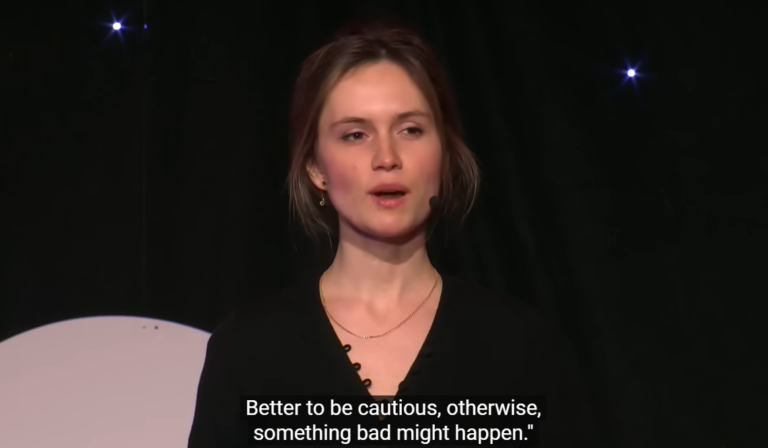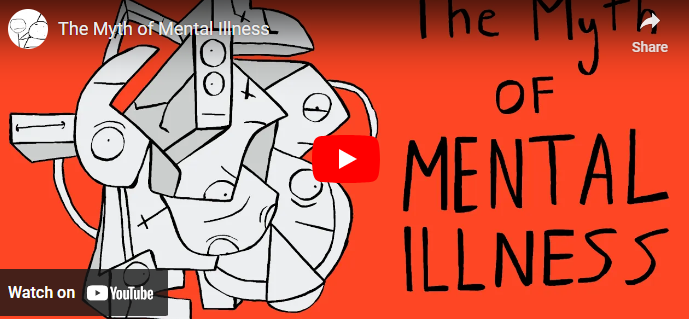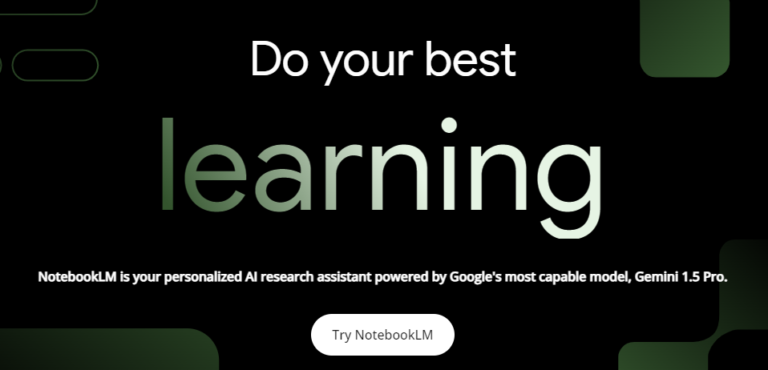
Contents
- 1 The Impact of Digital Technology on Mindfulness Practices
- 2 The Impact of Digital Technology on Mindfulness Practices
- 3 Mindfulness Apps: How Technology Can Aid Mindfulness Practice
- 4 Balancing Virtual and Real-World Connections: Nurturing Authentic Relationships in the Digital Age
- 5 Mindful Tech: How to Use Technology in a Mindful and Purposeful Manner
The Impact of Digital Technology on Mindfulness Practices
In today’s fast-paced digital age, where technology has become deeply integrated into our daily lives, finding balance between the digital world and our mental well-being is essential. Mindfulness, the practice of being fully present and aware of our thoughts, emotions, and sensations, can be a powerful tool in navigating the digital landscape and maintaining our overall well-being. However, digital technology can both support and hinder our mindfulness practices, making it crucial to understand its impact.
One of the major challenges posed by digital technology is the constant distractions it brings. With emails, social media notifications, and instant messaging, our attention is constantly being pulled away from the present moment. This constant barrage of information can lead to increased stress, anxiety, and a decreased ability to focus. However, when used mindfully, technology can actually support our mindfulness practices.
There are a variety of mindfulness apps available that can provide guidance and support in cultivating mindfulness in our daily lives. These apps offer features such as guided meditations, breathing exercises, and reminders to take mindful breaks throughout the day. By incorporating these apps into our digital routines, we can use technology as a tool for self-reflection and stress reduction.
Another way we can find balance in the digital age is by setting clear boundaries with technology. Establishing technology-free zones or specific times for digital detox can help us create space for mindfulness and presence. By disconnecting from our devices, even for short periods of time, we can cultivate a deeper sense of awareness and reconnect with our inner selves.
Additionally, it is important to be intentional about our online activities and connections. While the digital world offers us countless opportunities for virtual connections, it is crucial to nurture and prioritize our real-world relationships. Building authentic relationships and connections in the digital age requires us to be mindful of our online presence, practicing active listening, empathy, and genuine engagement.
Ultimately, finding balance in the digital age requires us to use technology in a mindful and purposeful manner. By incorporating mindfulness practices into our digital routines and being intentional about how we interact with technology, we can harness its benefits while minimizing its negative impact on our well-being. Mindfulness and technology can coexist harmoniously, allowing us to navigate the digital age with intention, presence, and well-being.
The Impact of Digital Technology on Mindfulness Practices
In today’s digital age, technology has become an integral part of our lives, permeating every aspect of our daily routines. While digital advancements have undoubtedly brought numerous benefits, they have also introduced new challenges, particularly when it comes to cultivating mindfulness in our fast-paced, constantly connected world.
One of the primary impacts of digital technology on mindfulness practices is the constant presence of distractions. Our smartphones, tablets, and computers provide us with instant access to endless sources of information and entertainment, making it difficult to disconnect and focus on the present moment. The constant notifications, social media updates, and the lure of mindless scrolling can disrupt our ability to be fully present and engaged.
Nevertheless, it is possible to reduce digital distractions and develop strategies to cultivate mindfulness despite the pervasive presence of technology. One effective approach is to establish designated tech-free zones or periods in our day-to-day lives. By setting aside specific times or areas where digital devices are off-limits, we create opportunities to disconnect, unwind, and reconnect with ourselves and the world around us.
Furthermore, mindfulness apps and other digital tools can actually aid our practice by providing convenient access to guided meditations and mindfulness exercises. These apps often include features such as reminders, progress tracking, and customizable meditation sessions, which can assist in creating a structured and consistent mindfulness routine.
To strike a balance between virtual and real-world connections, it is essential to nurture authentic relationships in the digital age. While technology allows us to stay connected with friends and family across distances, it is crucial not to let virtual interactions replace in-person connections. Engaging in mindful communication, whether through face-to-face conversations or video calls, fosters a deeper sense of connection and empathy.
Mindful tech usage involves using technology in a purposeful and intentional manner, rather than mindlessly consuming information or engaging in endless scrolling. It means being aware of our digital habits, setting boundaries on screen time, and choosing to use technology for activities that promote personal growth, creativity, and well-being. For example, we can use technology to access educational resources, engage in creative pursuits, or connect with like-minded individuals.
While digital technology can pose challenges to our mindfulness practices, we have the power to find balance in the digital age. By reducing distractions, leveraging mindfulness apps, nurturing authentic relationships, and adopting mindful tech use, we can navigate the digital landscape while staying grounded and connected to the present moment. Ultimately, it is up to us to consciously integrate technology into our lives in a way that supports mindfulness and well-being.
Mindfulness Apps: How Technology Can Aid Mindfulness Practice
In today’s digital age, where technology is deeply integrated into our daily lives, it’s no surprise that we often turn to our smartphones and devices for various purposes. However, while technology can sometimes be a source of distraction and stress, it can also serve as a valuable tool in cultivating mindfulness. Mindfulness apps, specifically designed to support and enhance mindfulness practices, are gaining popularity as individuals seek ways to find balance in the digital age.
These mindfulness apps offer a range of features that can aid in developing a regular mindfulness practice. One of the key elements of these apps is the guided meditation sessions they provide. With a vast library of guided meditations, users can choose sessions that suit their needs, whether it’s a short session to start the day or a longer one for deep relaxation. The guided meditations often come with calming background music and soothing voiceovers, creating a serene and immersive experience.
Beyond guided meditations, mindfulness apps also offer features such as reminders and timers to help individuals incorporate mindfulness into their daily routines. These reminders can be set at specific intervals throughout the day, gently nudging users to take a moment and reconnect with the present moment. Timers can be utilized during meditation sessions, allowing individuals to track their progress and gradually increase their mindfulness practice.
Some of these apps also include mindfulness exercises that can be practiced throughout the day, even when individuals are engaged in their digital activities. For example, users can receive prompts that encourage them to take mindful breaths or engage in body scans to release tension and increase awareness. These exercises serve as gentle reminders to stay present, even amidst the constant distractions of the digital world.
Furthermore, mindfulness apps often provide progress tracking and personalized insights that can motivate individuals to continue their mindfulness journey. These features offer a visual representation of the user’s commitment and progress, encouraging a sense of accomplishment. Additionally, the personalized insights provide valuable feedback on areas for improvement, helping individuals deepen their practice and build resilience in the face of digital distractions.
It’s important to note that while technology can support mindfulness practice, it’s equally vital to find a balance between technology use and offline experiences. Mindfulness apps should serve as tools to enhance our well-being, not replace real-world connections and experiences. Therefore, it’s essential for individuals to set boundaries and establish tech-free zones, allowing themselves to fully engage in the present moment without the constant pull of digital distractions.
While technology can sometimes hinder our ability to be present and mindful, mindful technology, such as mindfulness apps, can be invaluable in finding a balance in the digital age. These apps offer guided meditations, reminders, timers, and personalized insights that support individuals in their mindfulness practice. By utilizing these tools, individuals can harness the power of technology to cultivate mindfulness, enhance well-being, and navigate the digital world with greater awareness and intention.
Balancing Virtual and Real-World Connections: Nurturing Authentic Relationships in the Digital Age
The digital age has brought unprecedented connectivity and convenience to our lives. With just a few taps on our devices, we can connect with people from all around the world, access vast amounts of information, and stay updated on the latest news and trends. However, amidst this virtual landscape, it is crucial to find a balance between our digital connections and the real-world relationships that truly nourish and enrich our lives.
In the pursuit of nurturing authentic relationships in the digital age, it is essential to prioritize quality over quantity. While social media platforms offer us the ability to connect with a vast number of people, it is important to remember that true connection requires more than superficial interactions and likes. It involves deepening relationships with those who truly matter to us.
One way to achieve this balance is by setting boundaries and consciously allocating specific times for digital interactions. By designating certain periods of the day or week as tech-free time, we create space for meaningful face-to-face interactions, fostering a deeper sense of connection and understanding.
Another key strategy is to practice active listening and presence in our interactions. In a world saturated with notifications and distractions, being fully present with someone can create a profound impact. When engaging in a conversation or spending time with loved ones, putting away our devices and actively listening to their words and emotions can cultivate authentic connections and strengthen bonds.
Technology can also be harnessed as a tool to enhance our relationships and promote mindfulness. Mindful messaging apps, for instance, can encourage us to pause and reflect before sending a message, fostering healthier and more considerate online conversations. Additionally, apps that remind us to take breaks from our screens and engage in self-care can help prevent digital overwhelm and allow us to be fully present in our relationships.
Moreover, it is important to recognize the limitations of virtual connections and embrace the richness of real-world experiences. While technology enables us to connect with people across the globe, it cannot replace the joy of physical presence and the depth of shared experiences. Nurturing authentic relationships in the digital age involves finding a balance between these two realms, prioritizing face-to-face interactions and creating cherished memories in the offline world.
As we navigate the digital age and the vast array of virtual connections available to us, it is crucial to find a balance between our digital interactions and our real-world relationships. By setting boundaries, practicing active listening, using mindful tech tools, and embracing the uniqueness of physical presence, we can nurture authentic connections that bring true fulfillment and meaning to our lives. Let us strive to find this balance and cultivate relationships that enrich our souls in the midst of the digital age.
Mindful Tech: How to Use Technology in a Mindful and Purposeful Manner
In today’s digital age, technology has become an integral part of our lives. From smartphones to social media platforms, we are constantly surrounded by digital devices and virtual connections. While technology undoubtedly brings numerous benefits, it’s important to find a balance and use it in a mindful and purposeful manner. In this article, we will explore strategies for incorporating mindful tech into our daily lives, allowing us to harness the power of technology without being overwhelmed by its distractions.
-
Set Intentions: Before engaging with technology, it’s essential to set clear intentions. Ask yourself, "What do I hope to achieve or gain from using this technology?" Setting intentions helps you stay focused, prevent mindless scrolling or excessive screen time, and use technology with purpose.
-
Practice Digital Detox: Take breaks from technology to recharge and reconnect with the present moment. Designate "tech-free zones" or specific times during the day when you disconnect from digital devices. Use this time to engage in activities that promote relaxation, such as reading a book, going for a walk in nature, or practicing mindfulness meditation.
-
Cultivate Mindful Awareness: Pay attention to your digital habits and how they impact your well-being. Notice if certain apps or websites trigger stress, anxiety, or mindless behavior. By cultivating mindful awareness, you can make conscious choices about the technology you use and how it aligns with your values and goals.
-
Choose Quality over Quantity: Instead of mindlessly consuming vast amounts of digital content, focus on quality interactions. Seek out meaningful connections, informative articles, or educational resources that support your personal and professional growth. Prioritize quality over quantity to avoid feeling overwhelmed or disconnected.
-
Use Technology as a Tool for Mindfulness: Technology can be a valuable tool for cultivating mindfulness. There are various mindfulness apps available that offer guided meditations, breathing exercises, and relaxation techniques. Experiment with different apps to find the ones that resonate with you and integrate them into your daily mindfulness practice.
-
Practice Digital Mindfulness: When using technology, bring mindful awareness to your digital activities. Notice how you feel when scrolling through social media or engaging in online conversations. Are you experiencing joy, connection, or inspiration? Or are you feeling anxious, isolated, or triggered? By being mindful of your digital experiences, you can make conscious choices that enhance your well-being.
-
Create Tech Boundaries: Set boundaries around technology use to prevent it from encroaching on other areas of your life. Establish tech-free times, such as during meals or before bedtime, to prioritize real-world connections and restful sleep. By creating healthy boundaries, you can maintain a balanced relationship with technology.
Finding a balance in the digital age is essential for our well-being. Mindful tech usage allows us to harness the benefits of technology while avoiding its potential pitfalls. By setting intentions, practicing digital detox, cultivating mindful awareness, choosing quality over quantity, using technology as a tool for mindfulness, practicing digital mindfulness, and creating tech boundaries, we can incorporate technology into our lives in a mindful and purposeful manner. Embracing mindful tech helps us stay connected, informed, and grounded in the present moment while avoiding the distractions and overwhelm that can often accompany the digital world.
Conclusion
In an increasingly digital age, finding balance between mindfulness and technology has become a crucial challenge for many. The impact of digital technology on mindfulness practices is undeniable, as our constant connectivity and reliance on devices can lead to a sense of distraction and disconnection from the present moment. However, by employing strategies to reduce digital distractions and cultivate mindfulness, we can reclaim our focus and sense of presence in our lives.
One of the first steps in finding balance is recognizing the impact of digital technology on our mindfulness practices. The constant notifications, dings, and pings can pull us away from the present moment, leaving us feeling scattered and overwhelmed. This can interfere with our ability to fully engage in mindfulness practices, such as meditation, where focus and attention are crucial. By acknowledging these challenges, we can begin to explore strategies to overcome them.
Reducing digital distractions is essential to establishing a sense of balance. Setting boundaries with our devices, such as designating specific times for checking emails or social media, can help minimize interruptions and allow for more focused periods of mindfulness. Creating technology-free zones or implementing a digital detox day can also provide an opportunity for a reset, allowing us to fully immerse ourselves in the present moment without the constant pull of technology.
Mindfulness apps have emerged as a valuable tool in this digital age, aiding in our mindfulness practices. These apps provide accessible guided meditations, breathing exercises, and mindfulness reminders right at our fingertips. these apps into our daily routines can be a convenient and effective way to nurture our mindfulness practice, even amidst the distractions of technology.
While technology can enhance our mindfulness journey, it is important to balance virtual and real-world connections. Nurturing authentic relationships in the digital age involves consciously setting aside time for face-to-face interactions, actively listening, and being fully present with others. By cultivating authentic connections, we can foster a deeper sense of belonging and fulfillment, ultimately supporting our overall well-being and mindfulness.
Furthermore, using technology in a mindful and purposeful manner is vital. Instead of mindlessly scrolling through social media feeds or binge-watching videos, we can make intentional choices about how we engage with technology. Setting intentions before using technology and regularly evaluating our digital habits can empower us to use technology as a tool for growth, learning, and connection rather than as a mindless distraction.
Mindfulness and technology can coexist harmoniously in the digital age. By recognizing the impact of digital distractions on our mindfulness practices and implementing strategies to reduce them, we can cultivate a sense of balance and focus. Mindfulness apps can further enhance our journey by providing access to guided meditations and reminders. Balancing virtual and real-world connections and using technology in a mindful and purposeful manner are also essential for finding equilibrium. With these practices in place, we can navigate the digital age with presence, intention, and mindfulness, ultimately enhancing our well-being and quality of life.



